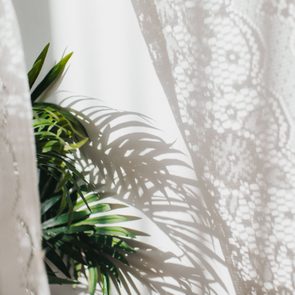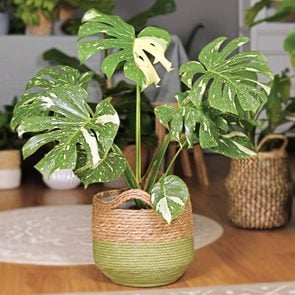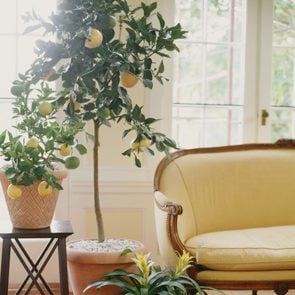Listen up, gardening newbies! Succulent plant care is a breeze, and this growing guide makes it even easier.
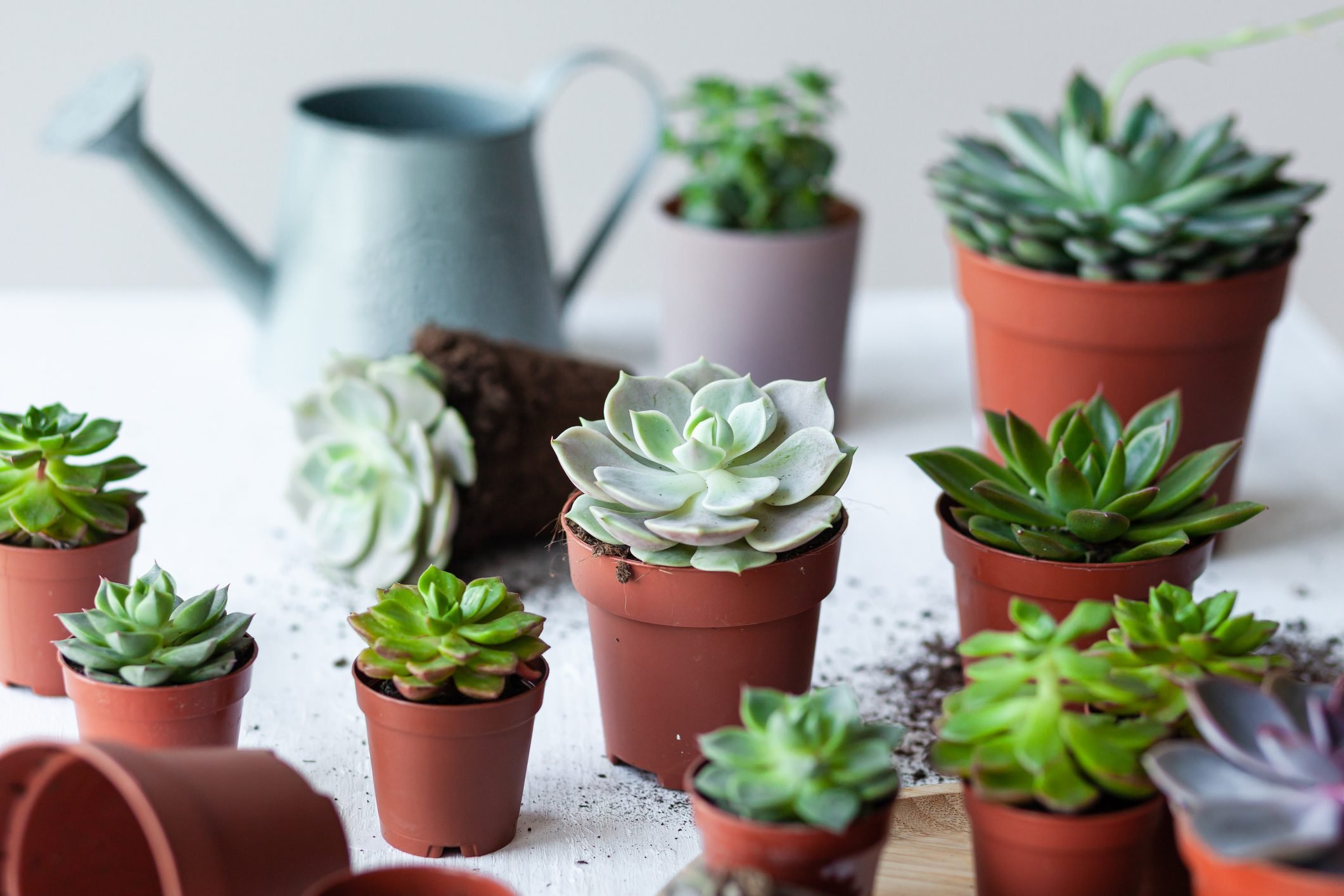
How to Care for Succulents

Succulents are go-to desktop plants for a reason—and it’s not just because these cute little guys make for some Instagram-worthy decor. Succulent plant care is generally uncomplicated, making these low-maintenance indoor plants ideal for beginners and people who want to keep indoor plants but don’t have a lot of time to devote to them. There are more than a dozen types of succulents, and the sheer variety makes them popular with collectors and anyone who likes decorating with plants. And if you like to buy plants online, small, sturdy succulents are usually a safe bet.
Because these fleshy plants have adapted to dry environments, they store water in their leaves, stems and roots. They’re largely self-sufficient, which means succulent plant care is mostly hands-off—assuming, that is, that you set your plants up for success by getting them started with the right conditions. We asked several experts from the National Garden Bureau for the lowdown on how to care for these cute, interesting and low-maintenance (but not maintenance-free!) indoor plants.
Get Reader’s Digest’s Read Up newsletter for humor, cleaning, travel, tech and fun facts all week long.
Where to put a succulent
Location, light and temperature are a few of the biggest concerns when it comes to succulent care. Considered together, you’ll have a better idea of where to put these small indoor plants.
Location
For starters, consider any furry friends in your home. “A wide variety of succulents are considered dangerous or potentially dangerous to pets if consumed,” says Justin Hancock, a horticulturist with Costa Farms. Either select pet-friendly succulents or make sure any plants that are toxic to dogs and cats remain well out of reach of your animal pals.
Common succulents that need to stay away from pets’ paws and mouths include most aloe species, many euphorbia species, many jade plant (crassula) species, desert rose (adenium) and kalanchoe.
Of course, gardeners like to say plants are the new pets. So if you don’t have any animals in your house, go wild with your plant babies.
Light
Our experts all had the same resounding message about plant lighting when it comes to succulents: Let there be light!
But exactly how much light do succulents need? “Indoors, most succulents will want as much light as they can get, either natural, artificial or a mix of both,” says Hancock. “Light fuels healthy growth, creating an attractive plant, and also ensures the plant has enough energy to flower.”
Gary Hunter of Gary’s Specialty Plants recommends south- and west-facing windows, which provide the most light. But it’s not only about quantity. Consistency matters too, so you’ll need to make sure the whole plant gets regular light—not just the side facing the window.
“They need that high light so they don’t etiolate [or stretch for the light],” says Lisa Eldred Steinkopf (aka the Houseplant Guru), a blogger, lecturer and author of Houseplants: The Complete Guide to Choosing, Growing, and Caring for Indoor Plants. She uses the example of holiday cacti meant to flower all over. “Make sure to turn it all year, every time you water, so that all sides get the same amount of light,” she says. “Otherwise, it will only bloom on the side that gets the most light.”
Temperature
We may associate succulents with hot desert conditions, but these hardy plants can actually tolerate a fairly wide range of temperatures. “Temperature varies widely depending on the regions the plants are native to,” says Hancock. “So it’s important to know and understand the type of succulent you’re growing to meet its temperature needs.”
Hunter adds that while succulents do well with normal household temperatures and humidity, most can tolerate extremes of hot and cold—meaning your succulent is probably safe near that drafty window in January. But, he adds, they do have their limits. “Most succulents are not winter hardy, meaning that a freeze will kill them,” he says.
Succulent plant care
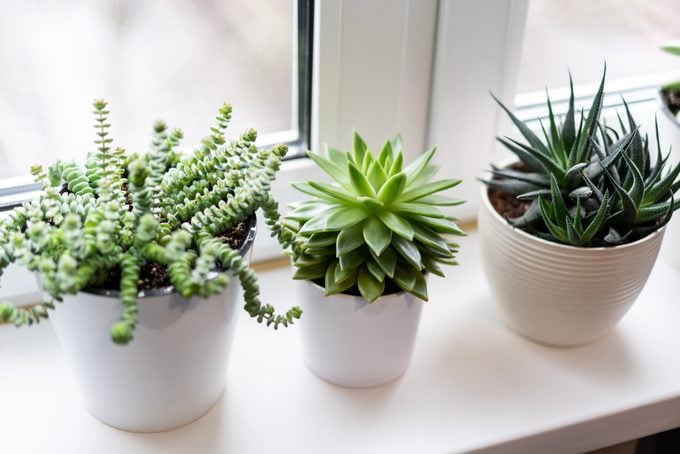
Learning how to care for a succulent is so easy a newbie can do it. And while tending to a thriving succulent doesn’t take a whole lot of effort, you can set yourself up for success by focusing on the container and soil type, along with water, fertilizer and dormancy needs. Armed with the info below, you can avoid dealing with a dead plant.
Container
The easiest way to keep a succulent happy is to keep it in a well-drained environment. By contrast, the fastest way to kill a succulent is to keep it waterlogged.
Because they don’t have deep root systems, succulents can make do with shallow containers—anything too deep is just extra space where soil can get waterlogged and cause root rot. “The best container for most succulents is a short pot, such as an azalea pot or bulb bowl with a drainage hole,” says Steinkopf.
Hancock agrees. “In general, you want a container large enough to keep the plant stable but not so large that there’s enough soil in it that the roots can stay wet,” he says.
Unglazed terra-cotta planters with drainage holes are a popular choice for succulents, particularly for novices or those who tend to overwater. Otherwise, says Hancock, you can use a glazed or nonporous container with no drainage hole—but only “if you’re watering is on point and you’re careful to never apply too much moisture.”
Soil
When it comes to the right potting mix for healthy succulents, here’s the mantra: well-drained soil. “Succulents need a high porosity potting medium, meaning that it is fast draining,” Steinkopf says.
Her go-to recommendation is good for most types of succulents: “Use a cactus mix and add pumice or chicken grit, perlite or orchid bark,” she says. These so-called amendments to your succulent soil will allow more air to circulate in the soil and keep it dryer.
“The makeup of that mix varies by the environment from which the plant comes,” says Hancock. “Many terrestrial species, including aloe, crassula, echeveria, haworthia and kalanchoe, like a mix for sharp drainage with elements like sand, perlite and pumice mixed with compost or potting soil.”
He adds that epiphytes, or air plants that are also succulents—mistletoe cactus and disocactus, for examples—will require a mix that’s more amendment than soil, “with chunks of bark, perlite and sphagnum moss.”
Water
When considering the water needs of these drought-tolerant beauties, it helps to remember the succulent definition. After all, what are succulent plants if not desert dwellers? With that in mind, it should come as no surprise that overwatering can be an issue. “A cold, wet succulent is a dead succulent,” says Steinkopf.
But that doesn’t mean succulents should be bereft of water. You simply need to pay attention to best practices when considering how to water succulents.
“[A succulent] should always be watered until water runs out of the drainage hole, so the whole root ball is moistened,” she says. “Then allow it to almost dry out before watering thoroughly again.”
So, how often do you water succulents? Your plant-watering schedule will depend on the type of succulent and its environment. “There’s no one-size-fits-all rule, because plant moisture use is driven by the plant’s environment,” says Hancock. “For example, the more light a plant gets, the more fuel it will have for growth—and the more water it will use in that growth. So it’s possible the same plant could need more frequent watering in a warm, bright sunroom than if it was in your living room.”
When in doubt, says Hancock, grab a toothpick and insert it into the drainage hole on the bottom of the pot. “If the toothpick comes out clean, the plant is dry and can use water,” he says. “If the toothpick comes out with potting mix adhering to it, there’s enough moisture in the mix that you typically don’t need to water.”
Fertilizer
Your succulents probably won’t need too much fertilizing, but doing it every once in a while doesn’t hurt. “I don’t fertilize my succulents as often as other houseplants,” says Steinkopf.
When you do fertilize, use a fertilizer labeled for use with succulents, she says. These will typically have a 1-1-1 NPK (nitrogen to phosphorus to potassium) ratio or be lower in nitrogen than phosphorus. You want a fertilizer that keeps your succulents healthy, but “you don’t want excessive growth with succulents,” she says. “That could cause etiolation, or stretching.”
According to Hancock, the easiest way to fertilize succulents is to use a time-release fertilizer mixed into the soil once or twice a year. “Spring and summer are the most efficient times to fertilize, because there are typically longer days and higher light intensities, which helps to push more growth.”
The advantage of a time-release fertilizer, he adds, is that “you apply it once, and it slowly adds nutrients to your plant over the course of weeks.” Alternatively, he says you can also use a water-soluble fertilizer that you apply periodically (depending on the label directions) when you water.
Dormancy
Plenty of succulents rank among the best flowering indoor plants, but you have to take care to coax those blooms from the plant. Many varieties of flowering succulents, including kalanchoe and Christmas cacti, require up to 16 hours of darkness in order to bloom. For many plants, this period of dormancy occurs naturally, especially in northern climates, where winter days are especially short. But in a climate with longer daylight hours—or, say, in a kitchen with plenty of artificial light—dormancy might not happen.
Start by researching your succulent to determine where it is from and the family it is in, says Steinkopf. For many types, cooler temperatures, rather than reduced light, are what prompt blooms.
“Different succulents are triggered to bloom by different factors,” says Hancock. “If you’re growing them in a spot where they don’t get any artificial light after sundown, they should bloom naturally on their own.”
But if the plant is in a space where you frequently turn on the light—”even for a minute or two after dark,” he adds—you may need to move the plant back and forth during the day or cover it at night when the artificial lights go on.
Common pests
Despite their low-maintenance rep, succulents can fall victim to a handful of pests and diseases. According to the Missouri Botanical Garden, the most common among these are fungal and bacterial diseases, which result from overwatering. Succulents might also get hit with mealybugs, spider mites and fungus gnats.
The botanical garden recommends quarantining new plants until you can confirm they’re pest-free. If an infestation has already occurred, rinse the plant and its roots in water, then repot it in new, sterile soil mix. If that doesn’t work, or if repotting isn’t an option, consult your garden center for an insecticidal soap that’s safe for succulents.
How to recognize a sickly succulent
“In general,” says Hancock, “unhealthy succulents will appear off-color from their usual look. They may appear pale or yellowish. If they’re infected with a bacterial or fungal disease, you may see mushy spots or discolored patches/spots. Some may start to drop leaves prematurely.”
You can often catch the problem quickly and only lose a few leaves, says Steinkopf. But if the problem seems to be spreading, it may be time to learn how to propagate succulents and create new plants from your sickly one. “Either propagate from a leaf or chop the head off and start a new plant,” she says. “Always allow a cut succulent end to callus over before planting.”
Common types of succulents
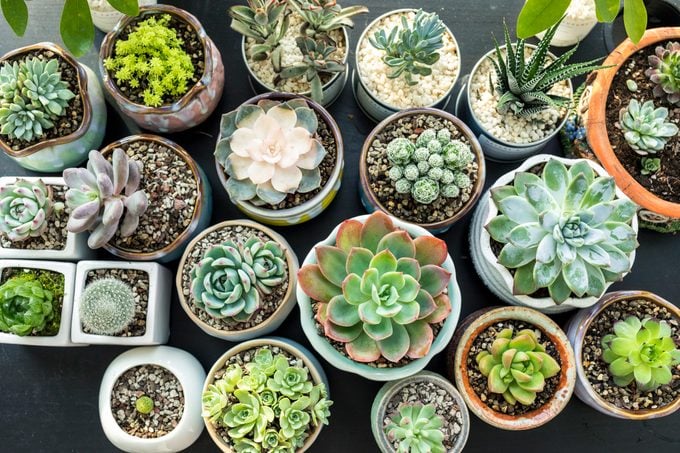
Succulents aren’t a single family of plants. Rather, succulents occur within at least 60 different plant families. They may have vastly different appearances and characteristics, but they generally have in common thick, plump leaves that store water and allow them to thrive in typically hot, arid environments (though succulents grow in rainforests and on every continent other than Antarctica).
When it comes to indoor plants, there are hundreds of types of succulents that do well. Here are a few of the most popular types:
- Jade plants: Crassula ovata is beloved for its dark green, shiny leaves and the fact that it’s tough to kill.
- Christmas cactus: Schlumbergera usually flower in the fall and winter, hence their holiday name. A well-tended Christmas cactus can live for years.
- Kalanchoe: Kalanchoe blossfeldiana is the most common of this family of more than 125 plants. A winter bloomer, it needs about 14 hours of darkness per day to bloom.
- Echeveria: There are more than 150 members of this family of cute, cheerful succulents, known for their rosette shapes—the babies (aka “chicks”) the main plant sends out.
- Snake Plant: Sansevieria trifasciata plants are known for their pleasing variegated foliage and their air-purifying qualities. Bonus: Snake plants are very easy to care for.
- Aloe: Aloe vera is the best-known of this crowded family of more than 650 types of succulents. The easy-to-care-for plants do double duty as a topical treatment for sunburn, minor burns and abrasions.
If you’re a pro at tending to succulents, try your hand at something new, like hydroponic gardening or creating a living wall of plants.
Sources:
- Justin Hancock, horticulturist at Costa Farms
- Gary Hunter of Gary’s Specialty Plants
- Lisa Eldred Steinkopf, blogger, lecturer and author of Houseplants: The Complete Guide to Choosing, Growing, and Caring for Indoor Plants
- Missouri Botanical Garden: “Insect pests of cacti and succulents grown as house plants”





















